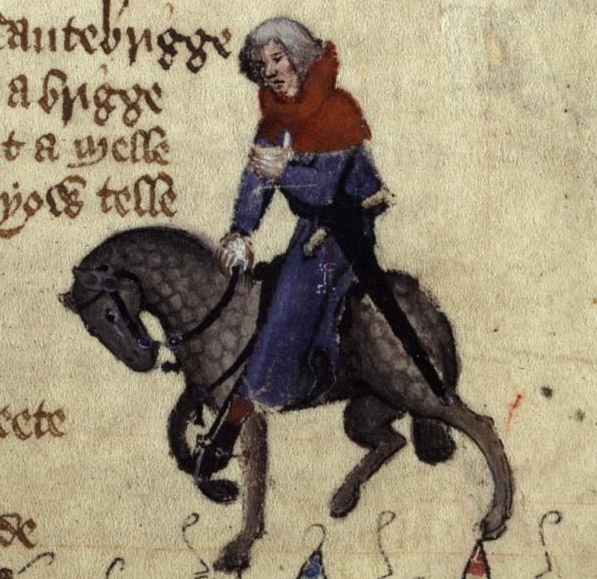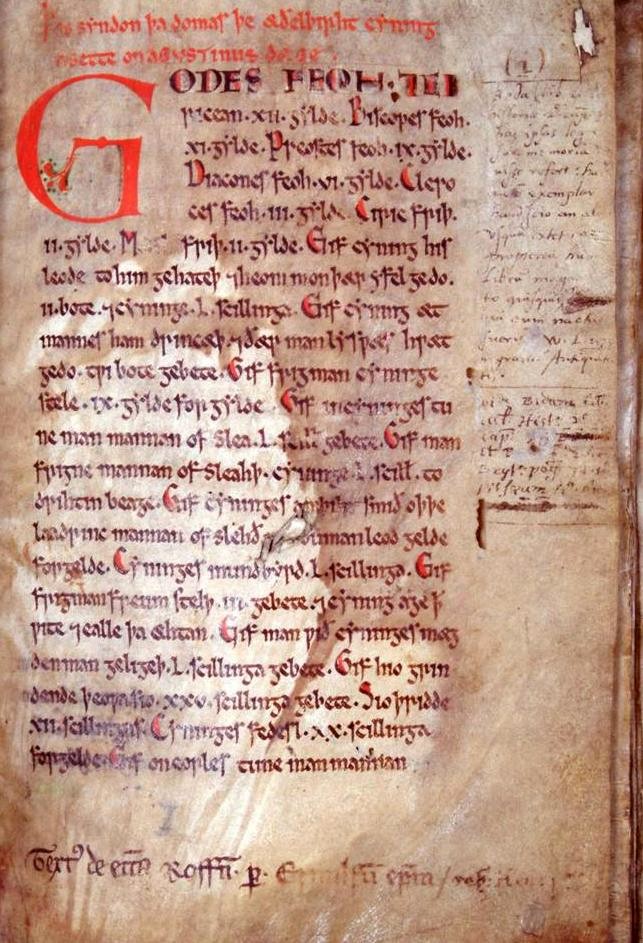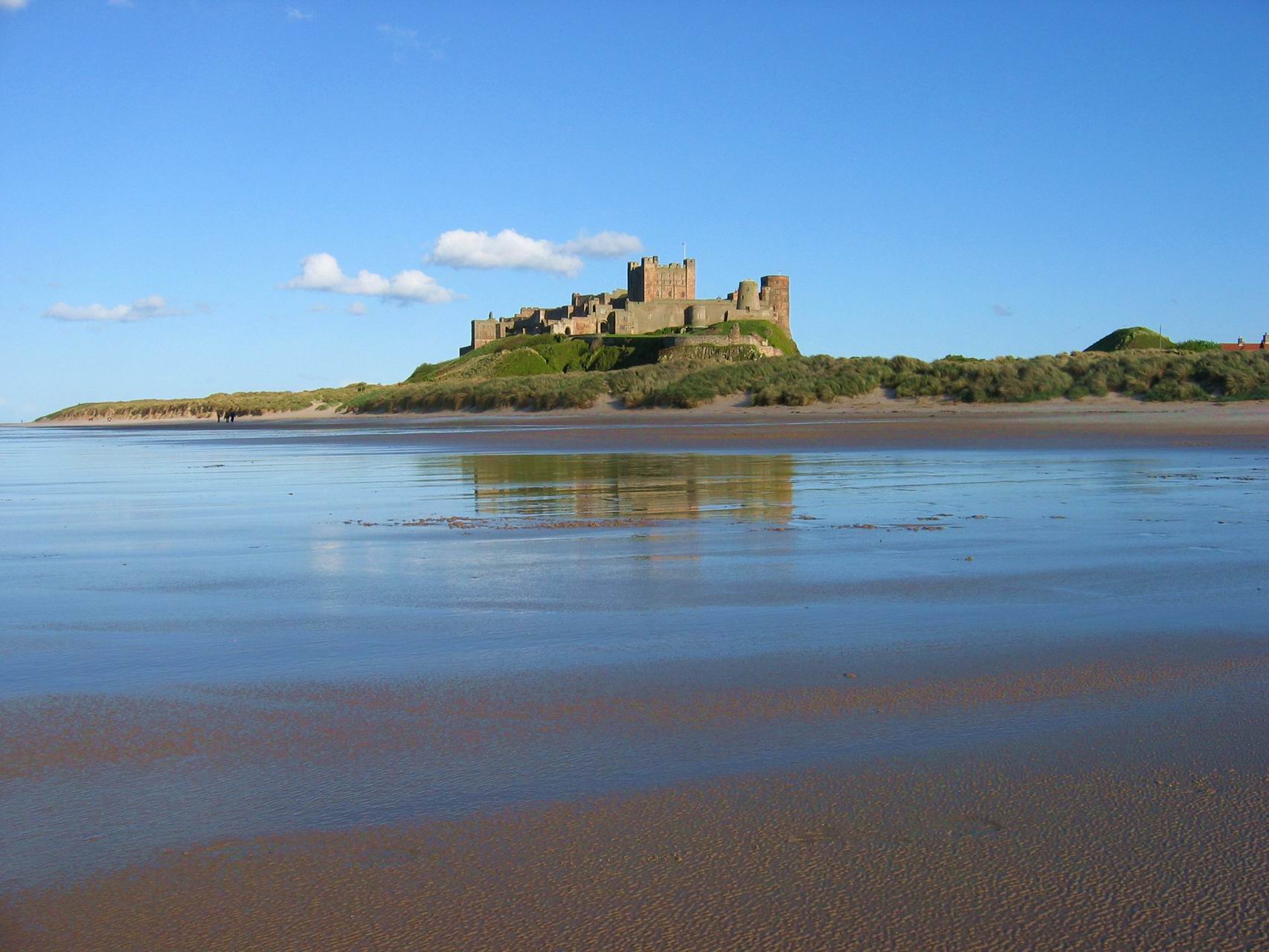|
High-reeve
High-reeve ( ang, hēahgerēfa) was a title taken by some English magnates during the 10th and 11th centuries, and is particularly associated with the rulers of Bamburgh. It was not however only used by rulers of Bamburgh; many other places used the title; e.g. there was an Ordulf "High-Reeve of Dumnonia". The first reference to a ''high-reeve'' was perhaps in the third code of Edmund I of England, where there is an official known as a ''summus praepositus''.Williams, ''Æthelred the Unready'', p. 64 Alfred Smyth thought ''heah-gerefa'' was influenced by the Scottish word ''mormaer'', the meaning of which, supposedly ''great steward'', is possibly similar. In the ''North People's Law'', a high-reeve is given a wergild of four thousand thrymsas, the same as a hold and half the wergild of an ealdorman.Seebohm, ''Tribal Custom in Anglo-Saxon Law'', p. 363North People's Law (Halsall)/ref> Ann Williams believes that the High-Reeve was originally an urban official whose job was to depu ... [...More Info...] [...Related Items...] OR: [Wikipedia] [Google] [Baidu] |
Reeve (England)
In Anglo-Saxon England, the reeve was a senior official with local responsibilities under the Crown, such as the chief magistrate of a town or district. After the Norman conquest, it was an office held by a man of lower rank, appointed as manager of a manor and overseer of the peasants. In this later role, historian H. R. Loyn observes, "he is the earliest English specialist in estate management." Anglo-Saxon England Before the Conquest, a reeve (Old English '' ġerēfa''; similar to the titles '' greve''/''gräfe'' in the Low Saxon languages of Northern Germany) was an administrative officer who generally ranked lower than the ealdorman or earl. The Old English word ''ġerēfa'' was originally a general term, but soon acquired a more technical meaning. Land was divided into a large number of hides—an area containing enough farmable land to support one household. Ten hides constituted a tithings, and the families living upon it (in theory, ten of them) were obliged to underta ... [...More Info...] [...Related Items...] OR: [Wikipedia] [Google] [Baidu] |
Anglo-Saxon
The Anglo-Saxons were a Cultural identity, cultural group who inhabited England in the Early Middle Ages. They traced their origins to settlers who came to Britain from mainland Europe in the 5th century. However, the ethnogenesis of the Anglo-Saxons happened within Britain, and the identity was not merely imported. Anglo-Saxon identity arose from interaction between incoming groups from several Germanic peoples, Germanic tribes, both amongst themselves, and with Celtic Britons, indigenous Britons. Many of the natives, over time, adopted Anglo-Saxon culture and language and were assimilated. The Anglo-Saxons established the concept, and the Kingdom of England, Kingdom, of England, and though the modern English language owes somewhat less than 26% of its words to their language, this includes the vast majority of words used in everyday speech. Historically, the Anglo-Saxon period denotes the period in Britain between about 450 and 1066, after Anglo-Saxon settlement of Britain, th ... [...More Info...] [...Related Items...] OR: [Wikipedia] [Google] [Baidu] |
Lower Rhenish-Westphalian Circle
Lower may refer to: *Lower (surname) *Lower Township, New Jersey *Lower Receiver (firearms) *Lower Wick Lower Wick is a small hamlet located in the county of Gloucestershire, England. It is situated about five miles south west of Dursley, eighteen miles southwest of Gloucester and fifteen miles northeast of Bristol. Lower Wick is within the civil ... Gloucestershire, England See also * Nizhny {{Disambiguation ... [...More Info...] [...Related Items...] OR: [Wikipedia] [Google] [Baidu] |
Anglo-Saxon Society
The Anglo-Saxons were a cultural group who inhabited England in the Early Middle Ages. They traced their origins to settlers who came to Britain from mainland Europe in the 5th century. However, the ethnogenesis of the Anglo-Saxons happened within Britain, and the identity was not merely imported. Anglo-Saxon identity arose from interaction between incoming groups from several Germanic tribes, both amongst themselves, and with indigenous Britons. Many of the natives, over time, adopted Anglo-Saxon culture and language and were assimilated. The Anglo-Saxons established the concept, and the Kingdom, of England, and though the modern English language owes somewhat less than 26% of its words to their language, this includes the vast majority of words used in everyday speech. Historically, the Anglo-Saxon period denotes the period in Britain between about 450 and 1066, after their initial settlement and up until the Norman Conquest. Higham, Nicholas J., and Martin J. Ryan. ''The An ... [...More Info...] [...Related Items...] OR: [Wikipedia] [Google] [Baidu] |
Anglo-Saxon Law
Anglo-Saxon law (Old English ''ǣ'', later ''lagu'' "law"; dōm "decree, judgment") is a body of written rules and customs that were in place during the Anglo-Saxon period in England, before the Norman conquest. This body of law, along with early Medieval Scandinavian law and Germanic law, descended from a family of ancient Germanic custom and legal thought. However, Anglo-Saxon law codes are distinct from other early Germanic legal statements—known as the ''leges barbarorum'', in part because they were written in Old English instead of in Latin. The laws of the Anglo-Saxons were the second in medieval Western Europe after those of the Irish to be expressed in a language other than Latin. Overview Early Germanic law Inked records of early Germanic law (''leges barbarorum'') were, in many ways, the product of Roman influence. Throughout the early middle ages, as various " Teutonic", or Germanic, tribes on the continent came into closer and more peaceful contact with the high ... [...More Info...] [...Related Items...] OR: [Wikipedia] [Google] [Baidu] |
Lower Saxony
Lower Saxony (german: Niedersachsen ; nds, Neddersassen; stq, Läichsaksen) is a German state (') in northwestern Germany. It is the second-largest state by land area, with , and fourth-largest in population (8 million in 2021) among the 16 ' federated as the Federal Republic of Germany. In rural areas, Northern Low Saxon and Saterland Frisian are still spoken, albeit in declining numbers. Lower Saxony borders on (from north and clockwise) the North Sea, the states of Schleswig-Holstein, Hamburg, , Brandenburg, Saxony-Anhalt, Thuringia, Hesse and North Rhine-Westphalia, and the Netherlands. Furthermore, the state of Bremen forms two enclaves within Lower Saxony, one being the city of Bremen, the other its seaport, Bremerhaven (which is a semi-enclave, as it has a coastline). Lower Saxony thus borders more neighbours than any other single '. The state's largest cities are state capital Hanover, Braunschweig (Brunswick), Lüneburg, Osnabrück, Oldenburg, Hildesheim, Salzgitt ... [...More Info...] [...Related Items...] OR: [Wikipedia] [Google] [Baidu] |
Electorate Of Hanover
The Electorate of Hanover (german: Kurfürstentum Hannover or simply ''Kurhannover'') was an electorate of the Holy Roman Empire, located in northwestern Germany and taking its name from the capital city of Hanover. It was formally known as the Electorate of Brunswick-Lüneburg (german: Kurfürstentum Braunschweig-Lüneburg). For most of its existence, the electorate was ruled in personal union with Great Britain and Ireland following the Hanoverian Succession. The Duchy of Brunswick-Lüneburg had been split in 1269 between different branches of the House of Welf. The Principality of Calenberg, ruled by a cadet branch of the family, emerged as the largest and most powerful of the Brunswick-Lüneburg states. In 1692, the Holy Roman Emperor elevated the Prince of Calenberg to the College of Electors, creating the new Electorate of Brunswick-Lüneburg. The fortunes of the Electorate were tied to those of Great Britain by the Act of Settlement 1701 and Act of Union 1707, which ... [...More Info...] [...Related Items...] OR: [Wikipedia] [Google] [Baidu] |
Medebach
Medebach () is a town in the Hochsauerland district, in North Rhine-Westphalia, Germany. Geography Medebach is situated approximately east of Winterberg, south-west of Korbach and north of Marburg. Neighbouring municipalities * Korbach * Lichtenfels, Hesse, Lichtenfels * Willingen * Winterberg Division of the town Besides, the town center of Medebach, the municipality consists of the following districts, formerly independent villages: * ''with Roninghausen'' * ''with Wissinghausen'' * * * * * * * International relations Medebach is town twinning, twinned with * Locminé (France) * Worbis (Germany) History The town was first mentioned in a document in 1144. It belonged to the Hanseatic League. Medebach and its district Oberschledorn entered the international news in September 2007 during the 2007 bomb plot in Germany, when three Islamic terrorists, two Germans and a Turk, were arrested there. They had received training in Pakistan and were about to build ... [...More Info...] [...Related Items...] OR: [Wikipedia] [Google] [Baidu] |
Northern Germany
Northern Germany (german: link=no, Norddeutschland) is a linguistic, geographic, socio-cultural and historic region in the northern part of Germany which includes the coastal states of Schleswig-Holstein, Mecklenburg-Vorpommern and Lower Saxony and the three city-states Berlin, Hamburg and Bremen. It contrasts with Southern Germany, Western Germany and Eastern Germany. Language Northern Germany generally refers to the ''Sprachraum'' area north of the Uerdingen and Benrath line isoglosses, where Low German dialects are spoken. These comprise the Low Saxon dialects in the west (including the Westphalian language area up to the Rhineland), the East Low German region along the Baltic coast with Western Pomerania, the Altmark and northern Brandenburg, as well as the North Low German dialects. Although from the 19th century onwards, the use of Standard German was strongly promoted especially by the Prussian administration, Low German dialects are still present in rural areas, with an ... [...More Info...] [...Related Items...] OR: [Wikipedia] [Google] [Baidu] |
Lower Saxon Circle
The Lower Saxon Circle (german: Niedersächsischer Reichskreis) was an Imperial Circle of the Holy Roman Empire. It covered much of the territory of the medieval Duchy of Saxony (except for Westphalia), and was originally called the Saxon Circle (german: Sächsischer Kreis) before later being better differentiated from the Upper Saxon Circle by the more specific name. An unusual aspect of this circle was that, at various times, the kings of Denmark (in Holstein), Great Britain (in Hanover) and Sweden (in Bremen) were all Princes of a number of Imperial States. Origin The first plans for a Lower Saxon Circle originate from Albert II of Germany in 1438. An Imperial Saxon Circle was formally created in 1500, but in 1512 it was divided into an Upper Saxon and Lower Saxon Circle. The division was only codified in 1522, and it took a while before the separation was completely implemented by the Imperial Chamber Court. Furthermore, the first mention of an Upper Saxon Circle, a Lower S ... [...More Info...] [...Related Items...] OR: [Wikipedia] [Google] [Baidu] |
Duchy Of Saxony
The Duchy of Saxony ( nds, Hartogdom Sassen, german: Herzogtum Sachsen) was originally the area settled by the Saxons in the late Early Middle Ages, when they were subdued by Charlemagne during the Saxon Wars from 772 and incorporated into the Carolingian Empire (Francia) by 804. Upon the 843 Treaty of Verdun, Saxony was one of the five German stem duchies of East Francia; Duke Henry the Fowler was elected German king in 919. Upon the deposition of the Welf duke Henry the Lion in 1180, the ducal title fell to the House of Ascania, while numerous territories split from Saxony, such as the Principality of Anhalt in 1218 and the Welf Duchy of Brunswick-Lüneburg in 1235. In 1296 the remaining lands were divided between the Ascanian dukes of Saxe-Lauenburg and Saxe-Wittenberg, the latter obtaining the title of Electors of Saxony by the Golden Bull of 1356. Geography The Saxon stem duchy covered the greater part of present-day Northern Germany, including the modern German states ... [...More Info...] [...Related Items...] OR: [Wikipedia] [Google] [Baidu] |
Earls, Ealdormen And High-reeves Of Bamburgh
The Rulers of Bamburgh were significant regional potentates in what is now northern England and south-eastern Scotland during the Viking Age. Sometimes referred to in modern sources as the Earldom of Bamburgh, their polity existed for roughly two centuries, beginning after the attacks on the Anglo-Saxon Kingdom of Northumbria by the Vikings in the later ninth century, and ending after the Norman Conquest later in the eleventh century. In Scottish and Irish sources of the period the Bamburgh 'earldom' is referred to as the kingship of the Northern English (or the North English kingdom). or simply of the 'Saxons'. In essence, Bamburgh and the surrounding region (the former Bernicia), the northern part of Northumbria, was ruled for a short period by shadowy kings, then by a series of 'kings', 'earls' (Latin '' duces'') and 'high-reeves' (from Old English ''heah-gerefa''). Most of these were descended from Eadwulf I of Bamburgh, thereafter called the Eadwulfings or House of Bamburgh. ... [...More Info...] [...Related Items...] OR: [Wikipedia] [Google] [Baidu] |







